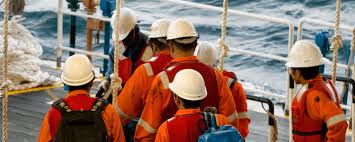Individual crew changes are costing up to an additional $2,000, doubling the price since last year as a result of the COVID-19 pandemic, Danish-managed crewing specialist Danica said.
The crewing agency said that the figure resulted from analysing a combination of fully allocated additional costs and estimates, based on the 1,276 crew changes on bulk carriers engaged in world-wide trade which Danica carried out from March to September 2020.
The additional costs stemming from the pandemic include items like hotel accommodation, airfares, PCR testing, and reimbursements for personal protective equipment.
“We found that on average it now costs almost $ 2,000 per crew movement. So, for one person joining and one returning home the cost is approximately $4,000, which is double on pre-pandemic prices,” Henrik Jensen, managing director of Danica Crewing Specialists, said.
A bulk carrier with a mix of Eastern European and Filipino crew has about 40 crew changes per year and that will be 80K extra costs, the company estimates.
Therefore, shipowners and operators are advised to set aside additional funds in next year’s budgets to allow for extra crew change costs amid pandemic measures that continue to pose challenges to the movement of seafarers.
“It is of course very difficult to forecast every additional cost which will be faced in 2021 but it would be prudent to assume that this global situation will remain with us for many more months to come and to therefore set aside sufficient funds to enable crew changes to take place whenever possible.”
“Airfares have risen significantly compared to 12 months ago and flights are still difficult to book in many parts of the world due to reduced timetables and last-minute changes or cancellations,” Jensen added.
As explained, the analysis does not include vessel deviation and delay costs for redirecting vessels to ports where crew changes are allowed and lost charter revenue.
The company said that vessel deviations caused only for the purpose of crew changes were rare as more ports are open for crew changes.
Jensen said that these overall additional costs are a recent development, adding that over the summer months the company managed to resume crew changes to a certain extent, thanks in part to the designation of seafarers as ‘essential workers’.
“However, crew changes have gone from being a straightforward shipping activity to becoming a seriously complicated challenge,” he pointed out, noting that there is an ever-changing list of restrictions, medical tests, hotels, visas, and transit requirements to be met in order to facilitate crew travel.
Hence, planning and executing a crew change can take two to three times as long as before.
Jensen estimates that crew scheduling will not return to normal until mid-2021 at the earliest.
“Due to Covid-19 and delays in repatriating seafarers, the entire crew planning system is destroyed and crew rotation patterns are all over the place. It will take a lot of time and effort by crew managers and ship owners, and need the assistance of the international community and governments, for the regular crew change system to be re-established,” he concluded.
It is estimated that some 400,000 seafarers are stuck at sea, months beyond their contracted time, with increasing reports of severe fatigue and mental distress.
A similar number of seafarers are trying to join ships to begin contracts, but transit to and from ships is being thwarted by travel restrictions and limitations imposed due to the pandemic.
Source: Offshore Energy






